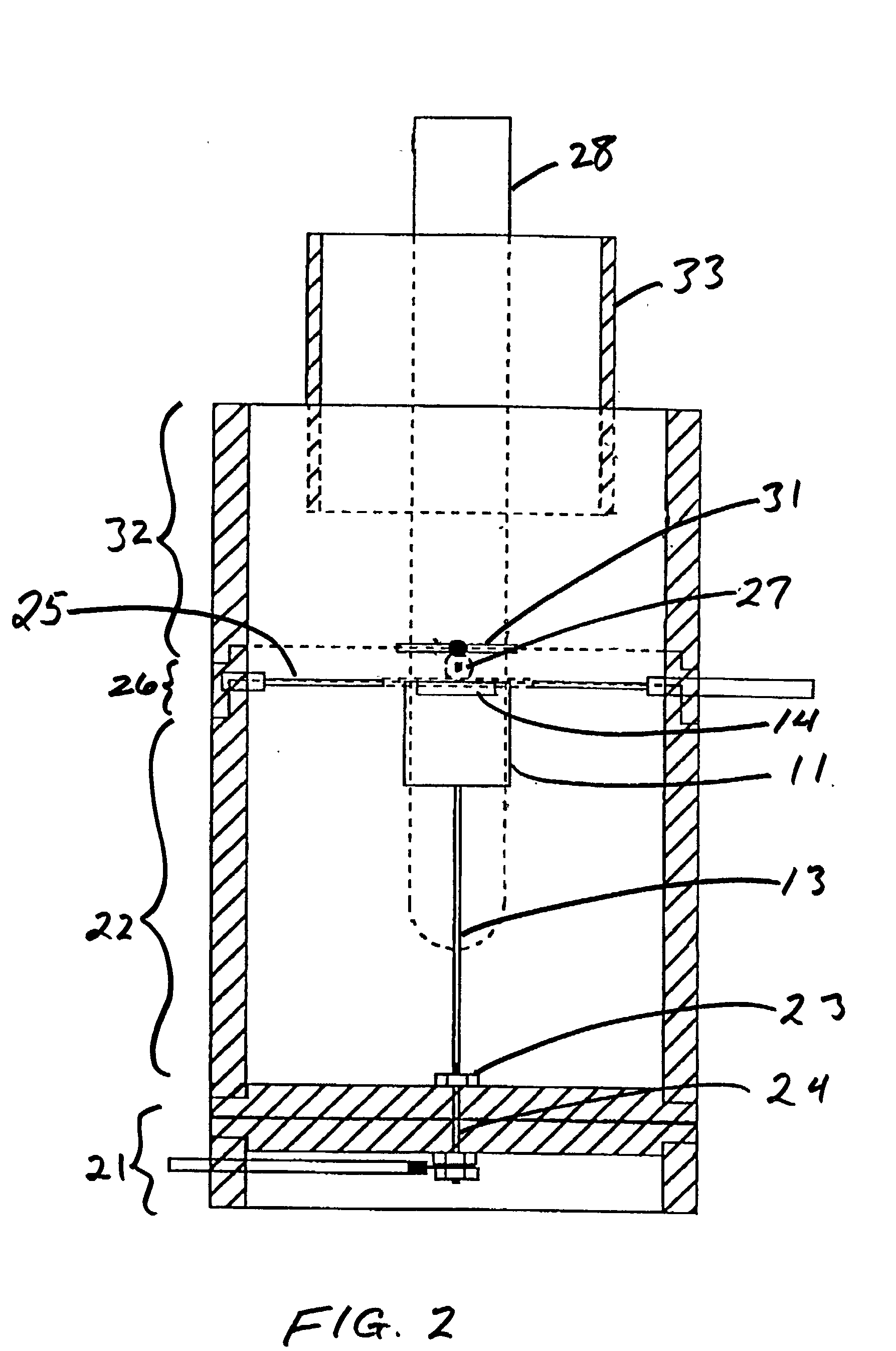Determination of chloride corrosion threshold for metals embedded in cementitious material
a cementitious material and chloride corrosion technology, applied in the direction of resistance/reactance/impedence, liquid/fluent solid measurement, instruments, etc., can solve the problems of low performance, high maintenance cost of bridge decks, and high cost of these agents, and prevent them from having a significant effect on the widespread use of chloride salts
- Summary
- Abstract
- Description
- Claims
- Application Information
AI Technical Summary
Problems solved by technology
Method used
Image
Examples
Embodiment Construction
[0033] This example illustrates a procedure in accordance with the present invention for determining the critical chloride corrosion threshold level for uncoated steel reinforcement in a controlled mortar mix.
[0034] Equipment. The equipment used in this example included a Solartron SI 287 Potentiostat (20 V compliance) (Solartron Analytical, Farnborough, Hampshire, England) in conjunction with an Accumet #13-620-52 Calomel Reference Electrode (Fisher Scientific, Pittsburgh, Pa., USA), a power supply from a PROOVE' it Rapid chloride Permeability Test (Germann Instruments, Inc., Evanston, Ill., USA) (an alternative is Agilent Technologies E3611A Power Supply, Agilent Technologies, Palo Alto, Calif., USA), fine-mesh nickel-chromium wire gauze for the anode, cathode and counter electrode, solid copper wire (2.2 mm diameter) for attachment to the steel reinforcement sample, and a Luggin probe consisting of a glass tube approximately 150 mm in height and 15.5 mm inside diameter and a capi...
PUM
| Property | Measurement | Unit |
|---|---|---|
| current density | aaaaa | aaaaa |
| current density | aaaaa | aaaaa |
| electric potential | aaaaa | aaaaa |
Abstract
Description
Claims
Application Information
 Login to View More
Login to View More - R&D
- Intellectual Property
- Life Sciences
- Materials
- Tech Scout
- Unparalleled Data Quality
- Higher Quality Content
- 60% Fewer Hallucinations
Browse by: Latest US Patents, China's latest patents, Technical Efficacy Thesaurus, Application Domain, Technology Topic, Popular Technical Reports.
© 2025 PatSnap. All rights reserved.Legal|Privacy policy|Modern Slavery Act Transparency Statement|Sitemap|About US| Contact US: help@patsnap.com



